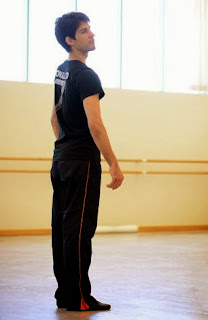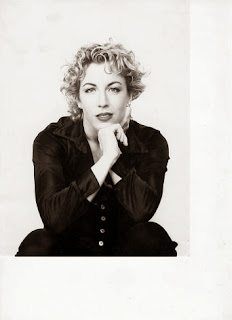 |
| Photo: Ryan Borque |
It might not be readily apparent, but there's classic film noir inspiration behind the dance in choreographer Christy Funsch's latest solo piece, "Moving Still(s)," which has its San Francisco premiere this weekend at CounterPulse on a program of works new and old by both Funsch and Portland choreographer Katherine Longstreth.
"Moving Still(s)" grew out of a month's work that Funsch did last year in the Djerassi Resident Artists program in Woodside, taking as a departure point Fritz Lang's 1931 German film "M," a classic thriller that tells of a serial killer who kidnaps and murders young children. Funsch, however, was less intrigued by the lurid details of the film than in the director's craft and the characters.
"I was drawn to a lot of the decisions Lang made as a filmmaker," she says, "the use of space, the camera angles, the duration of the shots, all are part of his storytelling technique. Even the shots without characters really contribute to sense of story, so you'll see an empty courtyard with clothes drifting away, a ball, a balloon without owners."
For this solo piece, which she premiered last April in New York, Funsch chose 15 characters from "M," as well as some from Jean Pierre-Melville's 1962 New Wave noir crime flick "Le Doulos," and distilled gestures specific to each.
"It's not a reinterpretation of film, but an experiment for me, a way of finding dynamic shifts, muscular tension, new ways of embodying gestures," she says. "The solo is not narrative, but it's not abstract glimpses of characters, either. You'll see that one is a child, another a woman, a lawyer, a policeman. So it's a moving pastiche of people, characters that emerge out of theatrical gesture."
More recently, Funsch's work has focused largely on solos - a retrospective at Z Space last year let audience members experience some of the many single-dancer pieces intimately and individually, one on one in private spaces, as well as in a traditional setting. Now she says, she's interested in getting back to group work. This weekend's program also will feature the premiere of a trio, "She's Near She's Now She's Nowhere," a collaboration with Tamara Albaitis, who created a sound installation of tiny speaker cones suspended on wires throughout the space.
"For a time I really looked at how the solo figure could be empowered," she says. "Now it's about looking at things as a whole - how we navigate the world and find meaning for ourselves as individuals in a collection. You can go away for a residency by yourself, but when you come back, you're part of something larger."







